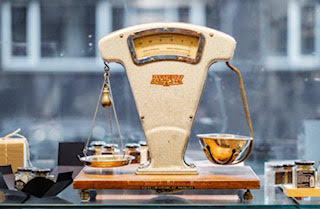Below is my latest blog post “Calorie counts on menu boards may help us eat less.”
You can also read it on Huffington Post by clicking HERE.
After much anticipation, the Food and Drug Administration (FDA) finally announced its final regulations requiring food establishments with 20 or more locations, including restaurants, fast-food chains, movie theaters, and pizza places, to state the number of calories in their menu items. And those calories will be visible; the font size of the calorie counts must be, at least, the same size as the food item name and/or price.
The regulations came out of a 2010 provision of Obamacare. Americans spend nearly half their food budget on foods eaten away from home, and these foods make up nearly a third of the calories consumed. We ought to know how many calories are in these foods.
New York City, California, Vermont, many New York State counties, Philadelphia, King County (WA), and others have already implemented calorie labeling policies. And a handful of restaurants, such as McDonald’s, Au Bon Pain, and Panera already post calories on menu boards nationally.
Next year when these rules are set to take effect nationally, if you go to a movie theater, you will see how many calories are in your oversize jug of soda and a bucket of popcorn, both large enough to feed an entire family. I hope that after seeing this information, you will consider skipping these treats or sharing them.
FDA Commissioner Margaret A. Hamburg said in the press release: “Making calorie information available on chain restaurant menus and vending machines is an important step for public health that will help consumers make informed choices for themselves and their families.”
Will posting calories actually help us make better choices and eat less?
While the evidence is mixed, I remain optimistic and so do other nutrition policy experts.
New York City has required chain eating establishments to post calorie counts on menu boards since 2006. As a New York City resident, I have been able to see some of the results. I recall seeing one of my favorite Starbucks treats, the marshmallow dream bar, originally contain around 400 calories when posting calories first went into effect. Today, at my local Starbucks, the treat weighs in at 240 calories.
I hope that requiring eating establishments to post calories will encourage companies to make their products smaller and reformulate them to contain less fat, sugar, and ultimately fewer calories.
Some companies, in addition to Starbucks, are already marketing healthier choices, perhaps, at least in part, as a result of calorie labeling, according to the Center for Science in the Public Interest (CSPI), a nutrition advocacy group in Washington D.C. Several popular chains have introduced smaller portions on their menus, such as: California Pizza Kitchen’s “Small Cravings,” The Cheesecake Factory’s “Small Plates & Snacks,” and T.G.I. Friday’s “Right Portion, Right Price.” Other eating establishments cut calories from some of its menu items. The chain Cosi, for example, introduced a new “Lighten Up! Menu,” featuring lower-calorie versions of menu items.
And if we have absolutely no idea how many calories our favorite foods contain, we sure will know when calorie counts are posted at our favorite eating chains nationwide.
Marion Nestle , my NYU colleague, author, and nutrition policy expert says “Calorie counts work for people who look at them and understand what they mean. They certainly work for me. If I see that a slice of pizza is 750 calories (not impossible), I don’t buy it. That’s more than a third of what I can eat in a day. Everyone is always saying that education is the first line of intervention in obesity and that people have to take personal responsibility for what they eat. Calorie labeling ought to help with that.”
Margo Wootan, director of nutrition policy at CSPI, issued a similar sentiment. She told me that “Menu labeling will allow people to make their own choices about what and how much to eat. It also provides an incentive for restaurants to improve their menus and add items lower in calories. Unfortunately, most restaurants’ regular and children’s menus are dominated by high calorie choices that are hard to fit into a healthy diet, especially given how much most people eat out these days.”
It is my hope that when adopted nationwide, requiring chain eating establishments to post calorie counts of our favorite foods will help us make better food choices and order smaller sizes while also encouraging these establishments to market healthier options with fewer calories. And, we can do as Dr. Nestle does: don’t buy foods that comprise a third of our daily calorie budget. These are certainly steps in the right direction to help reverse the obesity epidemic.




